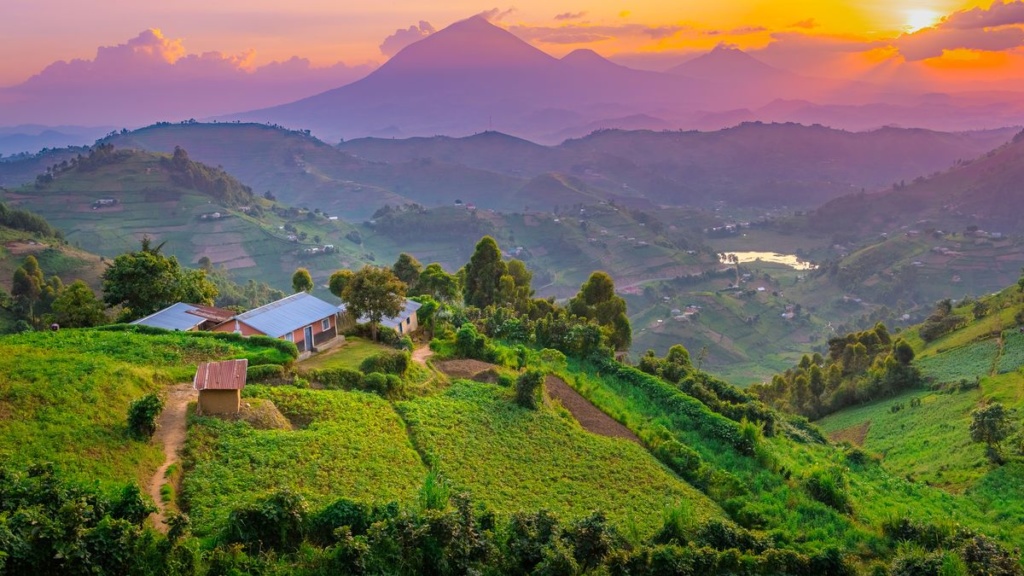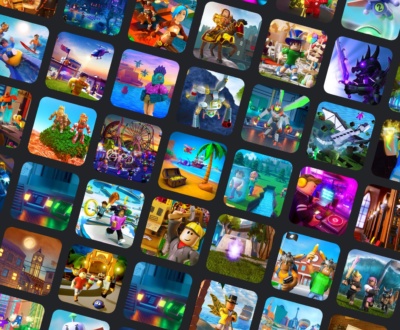Destination Marketing: 8 of the Best Campaigns(And What You Can Learn From Them)
- June 16, 2023
- Web marketing

Destination marketing is an incredibly popular approach when it comes to travel and tourism marketing. From national tourist boards to independent agencies that offer trips to specific towns or cities, it’s a very effective method of attracting travellers to a location in an engaging and creative manner without employing traditional, explicitly persuasive marketing messages.
There is a very broad range of ways that destination marketing can be used to grow awareness of a location and the travel experience that a company offers there. Whether you’re wondering what destination marketing looks like when put into practice, or are seeking inspiration for your brand’s next destination marketing campaign, here are nine of the best examples, along with key takeaways of what makes each one of them so effective.
What is Destination Marketing?
Destination marketing is an approach to marketing that is used in the travel industry as a way of promoting a location such as a town, region or country. Instead of advertising the service or product that they offer, travel businesses that use destination marketing focus their efforts on ‘selling’ the location that their offering targets.
Promoting a destination instead of a product or service means that customer awareness of a location grows and allows companies to attract attention in a way that avoids explicit marketing messaging that many consumers dislike. The aim is that the target audience will start to think about visiting a destination after seeing content that paints it in a positive light and that their first thought when it comes to actually booking a trip will be the brand behind this content.
Destination marketing aims to build awareness and interest in an area before the customer has visited. The most effective approaches tend to engage the customer through an emotional hook that sparks a real desire to see a destination, as this means that they’re much more likely to pay for a holiday there.
Whilst a very popular marketing approach with travel businesses that offer experiences in a specific location, destination marketing is also often used by local or national tourist boards as a way of increasing tourism in the area, establishing a positive reputation and bringing more visitors and thus more money.
8 of the Best Destination Marketing Campaigns
Fill Your Heart with Ireland
One of the most successful marketing campaigns for a destination that is still referenced today is ‘Fill Your Heart with Ireland’ which was produced by the country’s national tourism board.
The final product of this destination marketing campaign was a short video advertisement, showing a Swedish couple’s first trip to the area. Both visitors were hooked up to heart rate monitors that tracked their physiological changes throughout a range of activities, such as visiting cultural and historic sites, going surfing and hiking along the coast.
What made this advertisement so special was that the couple was also wearing a camera mounted on a helmet during the trip, capturing footage from their perspective throughout. The clips that made it into the final campaign were all taken from moments where their heart rate changed, creating a video full of moments that ‘filled’ the couple’s hearts with Ireland.

Screenshot from: https://www.youtube.com/watch?v=3qH7dEIECD4
Why it works:
The first stand-out feature of this campaign is the fact that the technology used in it is unique, which immediately makes it unique. It also uses the traditional destination marketing format of a video showcasing different appealing clips of a location, with the difference that these clips have been chosen by the data collected from the travellers featured in the campaign, not a campaign director.
Finally, the emphasis on ‘heart’ and emotive responses gives the campaign a significant emotional pull, engaging the viewer right from the beginning and showing plenty of scenarios they can imagine themselves in.
Inspired by Iceland
The ‘Inspired by Iceland’ campaign came as a response to the eruption of the Eyjafjallajökull volcano under a glacier in the country in 2010, which had a massive impact on travel all over the world thanks to the ash clouds that led to hundreds of flights being cancelled.
In an effort to dispel a negative image of the location, numerous national tourism-related companies teamed up with the Icelandic government and two key transport providers to the country to create a campaign painting the island in a more favourable light.
The underlying message of the entire campaign was that “Iceland has never been more awake”, making it the perfect time to visit the country on an exciting holiday. A variety of techniques and approaches were used to change the narrative around the country from negative to positive, including celebrity messages of endorsement and promotional videos.
The ‘Inspired by Iceland’ initiative has now been running for over a decade as a way to continue to promote Iceland as a thrilling travel destination, involving a range of campaigns that include the ‘Let It Out!’ portal of their website that allowed those frustrated by the pandemic to vent their frustration into their device and transmit it into Iceland’s deserted landscape.

Screenshot from: https://www.youtube.com/watch?v=7iWeMPEEuk0&t=1s
Why it works:
This is an outstanding example of one of the most successful marketing campaigns that turned a country’s reputation on its head and prevented a huge loss of income from tourism. The initial ‘Inspired by Iceland’ message took a humorous approach to the events of the eruption by stating that the country was ‘awake’, and this wit has carried on throughout many of the other campaigns promoted by the initiative.
GREAT Britain
The ‘GREAT Britain and Northern Ireland’ campaign was initially set up in 2011 in preparation for the London 2012 Olympic Games, highlighting the destination as an ideal place to live, work and visit. The original campaign spanned four years, involving partnerships with a range of brands and celebrity figures as well as focusing on the culture, heritage and landscape of the country.
Some of the most memorable campaigns as part of this initiative draw on iconic aspects of British culture, such as the ‘Bond is GREAT’ campaign that capitalised on international interest in one of the UK’s most famous fictional spies. Timed to coincide with the release of the 24th Bond film ‘Spectre’ in 2015, billboards, print ads and social media content were used to highlight some quintessentially British features of the series and encourage fans to visit the country on their next holiday.

Screenshot from: https://www.youtube.com/watch?v=HpF0HCTKIIE
Why it works:
The name and the overarching approach of this campaign tie into the name of the country, providing an instantly memorable and recognisable style across all of the ‘GREAT Britain’ marketing material. The links with cultural highlights like films and books provide a way to reach and engage international audiences, and partnerships with a range of brands provide a way to reach a wide variety of people and offer an endorsement.
Yodel Ay Hee Hoo
This destination marketing example focused on a single small region in Switzerland and used an interactive approach to promote it. Graubünden is a rural location with an incredibly peaceful atmosphere and friendly locals, and the region’s tourism board used the idea of connection to generate interest in the area.
One of the most successful campaign approaches set up a live video feed to an inhabitant of Vrin in Graubünden in a Swiss train station, allowing travellers to stop and talk to him. Not only did this allow for people to hear about the region from a native, but the speaker could send free train tickets to Vrin that the machine would print out, providing direct motivation to travel there.

Screenshot from: https://www.youtube.com/watch?v=l8Y5MDVhZDQ
Why it works:
Live video is an incredibly engaging method of destination marketing as it provides an instant connection to a location and makes the audience feel transported there without actually having to travel. The ‘Yodel Ay Hee Hoo’ campaign was so effective not only because of the concept, but because the resulting recording of these interactions provided material for a very entertaining short-form video, massively widening the reach of the campaign.
Sheepview
‘Sheepview’ is one of the best-known marketing campaigns in the travel industry, winning numerous awards and receiving unbeatable numbers of coverage from all over the world.
The concept promoted the Faroe Islands; a country so small that they did not exist on Google Street View. Inspired by this, the local tourism board decided to fix the problem with a play on words and attached a 360° camera to the back of one of the island’s sheep, recording the images to create their own ‘sheep view’ of the country.
This campaign went viral, with videos, images and social media posts all catching the attention of travellers and allowing them to see what the Faroe Islands were like, albeit from an unconventional perspective. The campaign also meant that the islands finally featured on Google Street View after a year, which was another success of the approach.

Screenshot from: https://www.youtube.com/watch?v=juijDAf96lI
Why it works:
Humour is at the heart of this campaign from the pun in the title to the concept itself, which definitely helped it catch so much attention. It’s also another example of allowing the audience to interact with a destination and explore it virtually, helping to engage them and illustrate why it’s a place worth visiting.
The Swedish Number
‘The Swedish Number’ destination marketing campaign was designed both to promote the country and celebrate that it had been 250 years since censorship was abolished there. The Swedish Tourist Association set up a phone number that connected the caller to a random Swedish person who had signed up to take part in the campaign, facilitating a conversation about anything at all.
There were no limits or guidelines on what had to be discussed when calling Sweden, and the locals on the other end were given no training or guidance either. Instead, it painted the destination as a place that is friendly, open and a little quirky, gaining a huge amount of coverage and attention with the campaign content.

Screenshot from: https://www.youtube.com/watch?v=mtb3f_NAmK0
Why it works:
The straightforward and unfiltered aspect of this campaign is what made it so memorable in the first place. Doing something risky in innovative travel marketing can always backfire, but this is an example where the gamble paid off and Sweden attracted plenty of positive attention and allowed a real connection between its people and potential visitors to the country.
All You Want is Greece
This tourist destination marketing campaign dials it back a little in its approach but is still a fantastic example of how to engage an audience by simply showcasing the features of a location. ‘All You Want is Greece’ was produced by the Greek National Tourism Organization at the start of 2021, and used the events of the previous year to really dial into what travellers were looking for once the world opened up again.
After the frustration and monotony of 2020, this campaign directly addresses the yearning that many of us were feeling for travel and adventure, by answering this desire with the statement ‘All You Want It Greece’. Five different promotional videos each targeted a different aspect of tourism in the country such as wellness and food, using beautiful visuals and simple, direct text to show potential travellers what they had been longing for.

Screenshot from: https://www.youtube.com/watch?v=eFpz-6jN9bE
Why it works:
This article has highlighted many quirky and unique examples of successful destination marketing campaigns, but this one works so well because it lets the appeal of the location speak for itself. Instead of chasing viral acclaim, this approach excels when it comes to engaging the audience by speaking directly to what they desire from a travel experience, using vivid and sensory imagery.
Blind Love
The final example of one of the best tourism campaigns that showcases destination marketing is Tourisme Québec’s ‘Blind Love’ which captures the experience of a blind traveller exploring Québec for the first time. The star of the campaign is an American man who has been blind since birth, who we see enjoying a variety of activities around the country such as hiking, fishing, sightseeing and attending festivals and concerts.
The video for this campaign is around three minutes long and features the usual stunning visuals you find in many destination marketing examples, showcasing the variety and beauty of Québec. But there’s also a focus on all other sensory aspects; the sound of each clip is crisp and immersive, there are plenty of shots of fingers smoothing over textures, and food is featured numerous times.
Joy and fun are the key takeaways from this campaign video, demonstrating that you don’t need to be able to see to get as much out of visiting Québec as possible.

Screenshot from: https://vimeo.com/161215902
Why it works:
This campaign is an outstanding example of how sensory and emotional engagement is one of the best ways to hook an audience and get them to remember a place. Not only is the visual and audio approach of the video outstanding but its message and concept are also incredibly moving, making it a meaningful campaign as well as a memorable one.
Summary
We hope that you’ve been inspired by these eight examples of campaigns from destination marketing in tourism and now understand some of the most effective approaches to getting your target audience to engage with and desire to visit a location. Your travel business may not have the same level of budget, but you can still take away the key aspects of what makes these successful marketing campaigns so impactful, and use this in your own destination marketing.
If you’re looking for help creating impactful marketing campaigns like those featured above, Swift Web Design can help. We help our clients get featured in top travel publications and improve their brand visibility, and we’d love to talk to you about how we can help your business develop campaigns that bring long-term benefits. Get in touch for more information and to receive a free proposal.
Swift Web Design
We are a digital marketing company with a focus on helping our customers achieve great results across several key areas.
Request a free quote
We offer professional SEO services that help websites increase their organic search score drastically in order to compete for the highest rankings even when it comes to highly competitive keywords.








